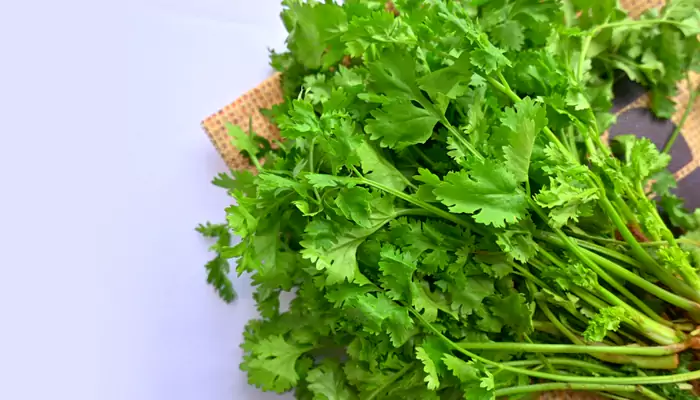Preserving Coriander: Tips and Tricks You Must Know
When you are standing in your kitchen, the enticing aroma of freshly chopped coriander (also known as cilantro) fills the air, is something we all like. But how do we maintain that fresh aroma?
- Elisa Ghosh
- 19 June, 2025
- 2 mins ago

Preserving Coriander: Tips and Tricks You Must Know
When you are standing in your kitchen, the enticing aroma of freshly chopped coriander (also known as cilantro) fills the air, is something we all like. But how do we maintain that fresh aroma?
You’ve just prepared a vibrant salsa, and that last sprinkle of coriander takes it from good to unforgettable. But what happens when your bundle of fresh coriander starts to wilt and spoil before you can use it all? Preserving coriander is an art, one that ensures you always have this versatile herb on hand, ready to elevate your dishes. Let's explore the best tips and tricks to keep your coriander fresh and flavourful.
Understanding Coriander's Fragility
Coriander, with its delicate leaves and stems, is one of the most perishable herbs. It has a high moisture content and a short shelf life, which means it can wilt and become slimy within days if not stored properly. The key to preserving coriander lies in understanding how to manage its moisture and protect it from rapid degradation.

Storing Fresh Coriander in the Refrigerator
One of the simplest ways to keep coriander fresh is to store it in the refrigerator. Start by washing the coriander thoroughly to remove any dirt or pesticides. After washing, gently pat the leaves dry with paper towels. Excess moisture can lead to faster spoilage, so make sure the coriander is dry but not dehydrated. Next, trim the ends of the coriander stems and place the bunch in a glass of water, similar to how you would store cut flowers. Cover the leaves loosely with a plastic bag to maintain humidity while allowing some airflow. This method can keep coriander fresh for up to two weeks.
Freezing Coriander for Long-Term Storage
If you have a large quantity of coriander that you can’t use immediately, freezing is an excellent option. Begin by washing and drying the coriander. You can then chop the leaves and stems finely or leave them whole, depending on your preference. There are two popular methods for freezing coriander: in ice cube trays or in freezer bags. For the ice cube tray method, place chopped coriander into the trays and fill them with water or olive oil. Once frozen, transfer the cubes to a freezer bag. This method allows you to easily add a burst of coriander flavour to soups, stews, and sauces. Alternatively, you can simply place washed and dried coriander leaves in a freezer bag, removing as much air as possible before sealing. This method is quicker but may result in some texture loss when thawed.
Drying Coriander for a Convenient Spice
Drying coriander is another effective way to preserve it, turning it into a handy spice that can be used year-round. Wash the coriander and let it air dry completely. You can use a food dehydrator, an oven set to a low temperature, or simply hang the coriander in a dry, well-ventilated area away from direct sunlight. Once dried, crush the leaves gently and store them in an airtight container. Dried coriander retains much of its flavour and can be sprinkled into dishes where fresh coriander would be used, such as curries, soups, and marinades.
Making Coriander Paste for Culinary Ease
Creating a coriander paste is an innovative way to preserve its fresh flavour. Blend washed and dried coriander leaves with a bit of olive oil, garlic, salt, and a splash of lemon juice until you achieve a smooth consistency. Spoon the paste into an ice cube tray and freeze. Once frozen, transfer the cubes to a freezer bag for easy use. Coriander paste is a fantastic addition to marinades, dressings, and even as a quick base for green chutney. This method captures the vibrant taste of fresh coriander and is incredibly convenient for quick cooking.
Preserving coriander ensures that you can enjoy its fresh, vibrant flavour long after the growing season has ended. When you are taking a little time to properly store this aromatic herb, you can enhance your culinary creations and avoid the disappointment of wilted, unusable coriander. Experiment with these techniques and find the one that best suits your cooking style and needs.










